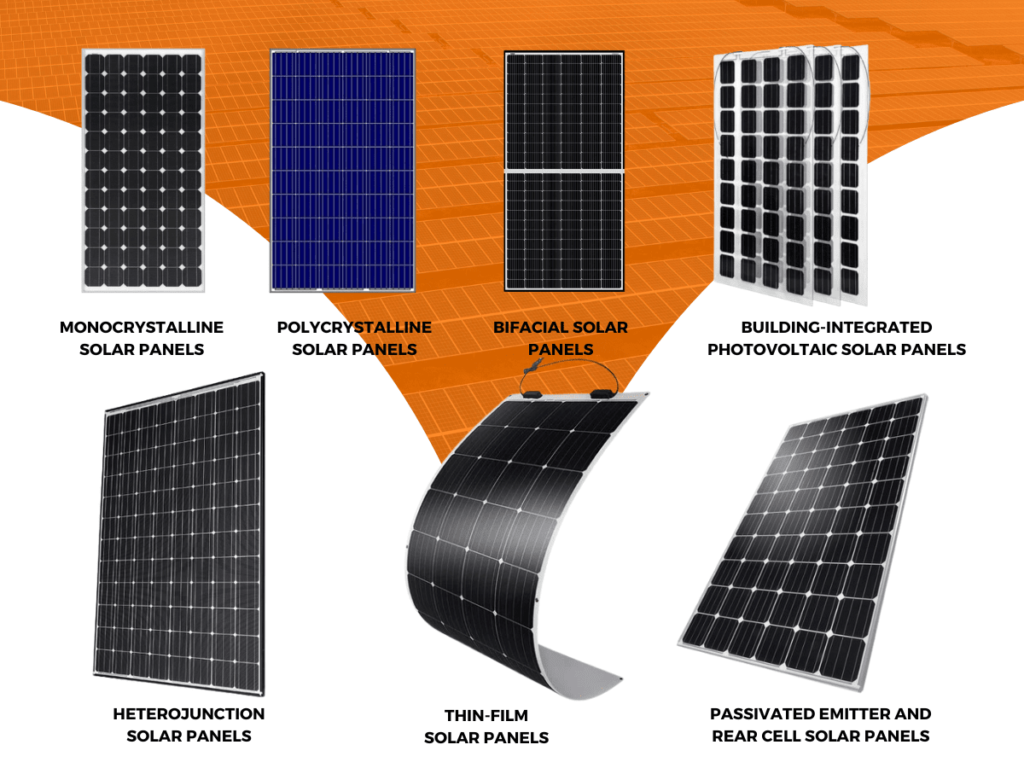Solar energy is widely regarded as one of the most promising renewable energy sources. Its capacity to produce clean, sustainable, and abundant electricity makes it crucial in combating climate change and reducing dependency on fossil fuels. At the heart of solar energy systems are solar cells, which convert sunlight directly into electricity through the photovoltaic (PV) effect. Over the years, extensive research has been dedicated to improving solar cell efficiency, durability, and cost-effectiveness. This article explores the key areas of research in solar cell technology, the challenges the field faces, and the recent developments that are driving advancements.
1. Types of Solar Cells

Solar cells come in various types, each with distinct characteristics in terms of efficiency, cost, and material usage. The most common types include:
- Monocrystalline Silicon Solar Cells: Made from a single continuous crystal structure, these cells offer high efficiency (typically 18-22%) and are long-lasting. However, they are expensive to produce due to the energy-intensive manufacturing process.
- Polycrystalline Silicon Solar Cells: These are made from silicon crystals that are melted together. Although their efficiency (15-18%) is lower than monocrystalline, they are more affordable to produce.
- Thin-Film Solar Cells: These cells use a thin layer of photovoltaic material (such as cadmium telluride or amorphous silicon) deposited on a substrate. They are lightweight, flexible, and cost-effective but generally have lower efficiency (10-12%).
- Perovskite Solar Cells: A newer technology using perovskite materials (a specific crystal structure) to absorb light. These cells promise high efficiency and are easier and cheaper to manufacture, but challenges with stability and toxicity still persist.
- Organic Photovoltaic Cells (OPVs): These cells are made from organic materials (polymers or small molecules). While they are flexible and lightweight, their efficiency is currently lower than silicon-based cells, and they face challenges regarding long-term stability.
- Concentrated Photovoltaics (CPV): These use lenses or mirrors to focus sunlight onto small, high-efficiency solar cells. CPV systems are promising for large-scale, utility-scale projects but require complex tracking systems and are more expensive.
2. Key Areas of Research in Solar Cells
Advancements in solar cell technology are driven by ongoing research in materials science, nanotechnology, and photonics. The following areas are central to improving solar cell performance:
2.1 Efficiency Improvements
One of the primary goals of solar cell research is to increase the efficiency of converting sunlight into electricity. For conventional silicon-based solar cells, a theoretical efficiency limit exists due to the bandgap of silicon (approximately 29%). Research is focused on:
- Multijunction Solar Cells: These cells layer different materials with different bandgaps to capture a broader spectrum of sunlight, increasing overall efficiency. Tandem solar cells (e.g., perovskite on top of silicon) are also being developed to push efficiency past 30%.
- Quantum Dots and Nanomaterials: Quantum dots have the potential to absorb light more effectively by taking advantage of their small size and tunable bandgaps. Nanomaterials are being incorporated into solar cells to enhance light absorption, charge transport, and overall efficiency.
- Hot Carrier Solar Cells: These cells aim to exploit the “hot carriers” (electrons excited by high-energy photons) to improve energy conversion before they lose excess energy as heat. The research is still in early stages but could break existing efficiency limits.
2.2 Durability and Stability
A major limitation of many solar cell technologies, especially organic and perovskite cells, is their long-term stability. Solar cells degrade over time due to environmental factors such as moisture, temperature, and UV exposure. Research is being conducted to:
- Enhance Material Stability: Perovskite solar cells, for instance, suffer from poor stability under humidity and UV radiation. Researchers are exploring encapsulation techniques and the development of more stable materials.
- Protective Coatings: Thin-film coatings or encapsulants can protect cells from environmental stressors, enhancing their lifespan and efficiency.
2.3 Cost Reduction
The cost of solar cells, particularly those made from silicon, remains one of the largest barriers to their widespread adoption. While prices have decreased significantly over the past decade, ongoing research aims to:
- Low-Cost Manufacturing Processes: Advances in printing techniques, roll-to-roll manufacturing, and simpler fabrication methods for materials like perovskites and organic photovoltaics aim to reduce production costs.
- Recyclability and Sustainability: The development of recyclable and sustainable materials could reduce costs in the long term while reducing environmental impact. Researchers are working on solar panels made from non-toxic materials that are easier to recycle.
2.4 Flexible and Lightweight Solar Cells
The development of flexible and lightweight solar cells is key to expanding the applications of solar energy, particularly in consumer electronics, vehicles, and wearable devices. Key research areas in this field include:
- Organic and Perovskite Solar Cells: Both of these materials are naturally flexible, and researchers are working to make them more durable and efficient.
- Bifacial Solar Cells: These cells can absorb light from both the front and the back, making them suitable for use on surfaces that are not fully exposed to direct sunlight (e.g., on buildings or vehicles).
3. Challenges in Solar Cell Technology
Despite significant progress, several challenges remain in the development and widespread adoption of solar cells:
3.1 Efficiency Limits
While there have been improvements in efficiency, especially with technologies like tandem solar cells and quantum dots, the theoretical efficiency limits for many materials have yet to be fully overcome. For example, silicon-based solar cells face the Shockley-Queisser limit, which restricts their maximum theoretical efficiency to around 29%.
3.2 Material Constraints
Many of the promising materials for solar cells, such as perovskites, face issues with toxicity (e.g., lead) and long-term stability. Additionally, the availability of raw materials for high-efficiency cells, such as rare earth metals or indium, could pose supply chain risks.
3.3 Manufacturing and Scalability
The transition from laboratory-scale innovations to large-scale manufacturing remains a significant challenge. Scaling up production without compromising efficiency or driving up costs is a complex issue that requires new manufacturing techniques, quality control processes, and supply chain infrastructure.
3.4 Energy Storage
Solar energy is intermittent, meaning it only generates power when the sun is shining. Efficient energy storage systems (e.g., batteries) are crucial to ensuring a continuous power supply. Although significant progress has been made in battery technologies (like lithium-ion and solid-state batteries), integrating cost-effective, high-capacity storage with solar power generation remains a challenge.
3.5 Integration with Existing Infrastructure
Integrating solar energy systems into existing power grids, especially at the residential and commercial levels, requires significant infrastructure changes. This includes the development of smart grids, energy storage, and the ability to handle fluctuating power output from renewable sources.
4. Recent Developments in Solar Cell Technology
Recent advancements are accelerating the pace of innovation in solar energy:
- Perovskite Solar Cells: Perovskite materials have demonstrated efficiency rates exceeding 25%, making them one of the most promising developments in solar technology. Researchers have focused on increasing the stability of these cells, with some recent breakthroughs improving their lifespan to several years.
- Tandem Solar Cells: Recent research in tandem solar cells, combining perovskites with silicon, has led to efficiencies above 30%, offering a path to exceeding the performance limits of traditional silicon cells.
- Artificial Photosynthesis and Solar Fuels: Researchers are investigating technologies that use sunlight to generate fuels (e.g., hydrogen) directly through artificial photosynthesis. This would allow solar energy to be stored chemically and used on demand, a major breakthrough for energy storage.
- Biodegradable Solar Cells: Efforts to create environmentally friendly solar panels have led to the development of biodegradable solar cells that minimize the environmental footprint and could replace toxic materials.
Conclusion
Solar energy holds immense potential to provide sustainable and clean power for a rapidly growing global population. While solar cell technology has seen significant advancements in efficiency, cost, and flexibility, there are still several challenges to overcome. Research continues to drive innovation, with exciting developments in materials science, manufacturing processes, and energy storage technologies. The future of solar power is undoubtedly bright, but continued efforts are required to make it more efficient, affordable, and accessible to all.




